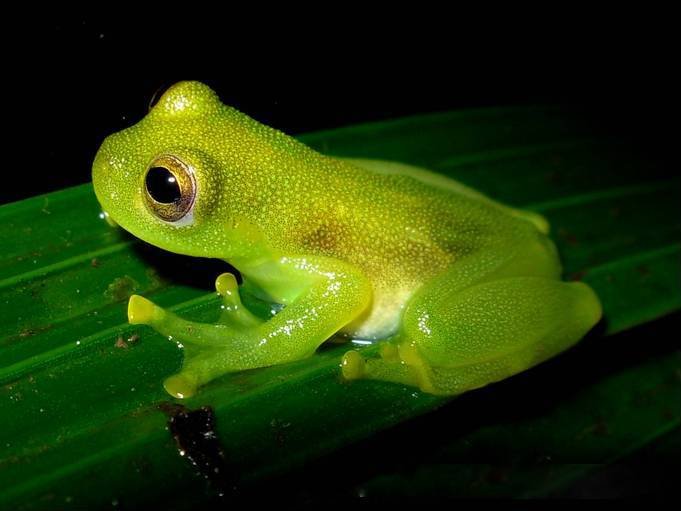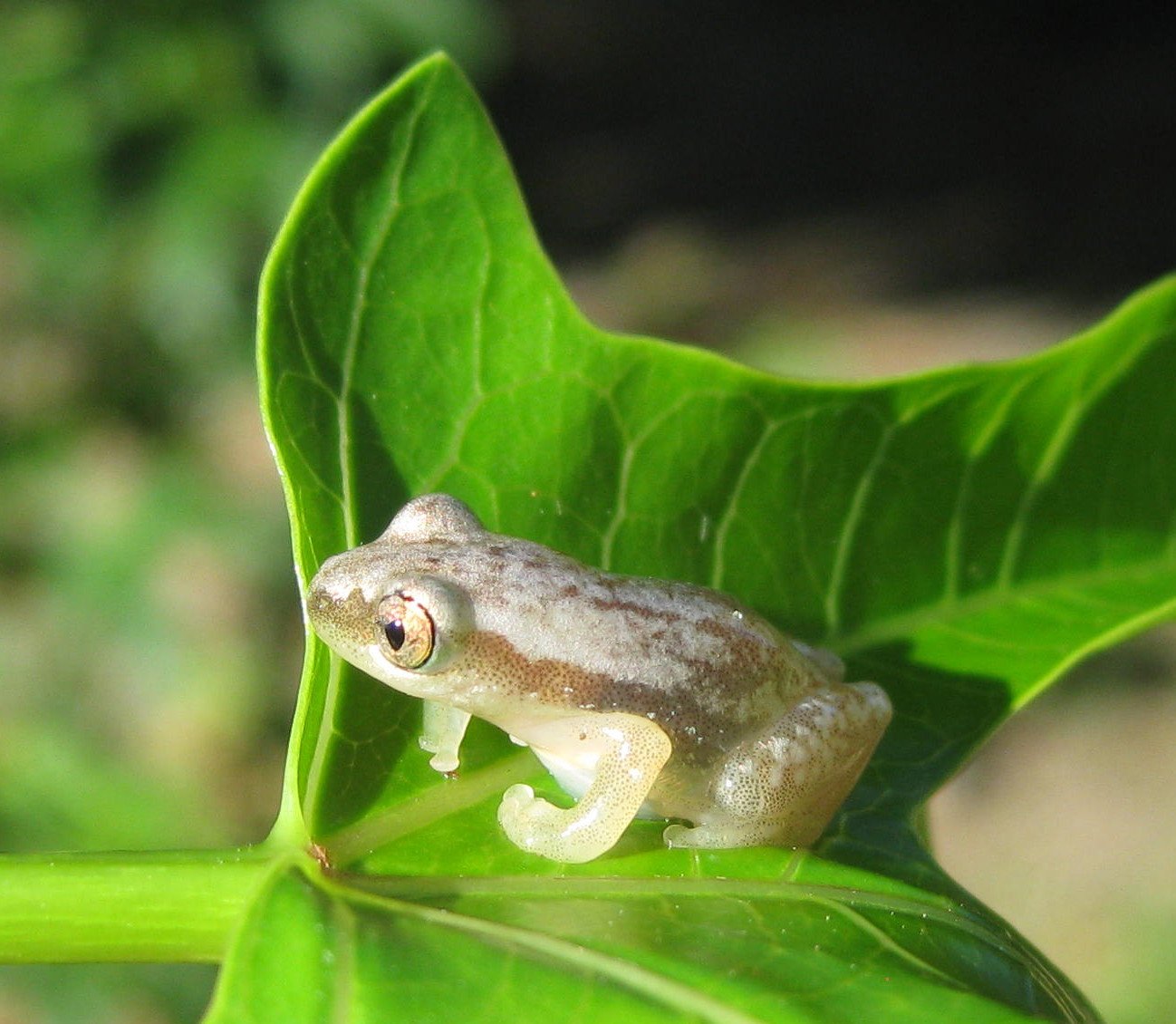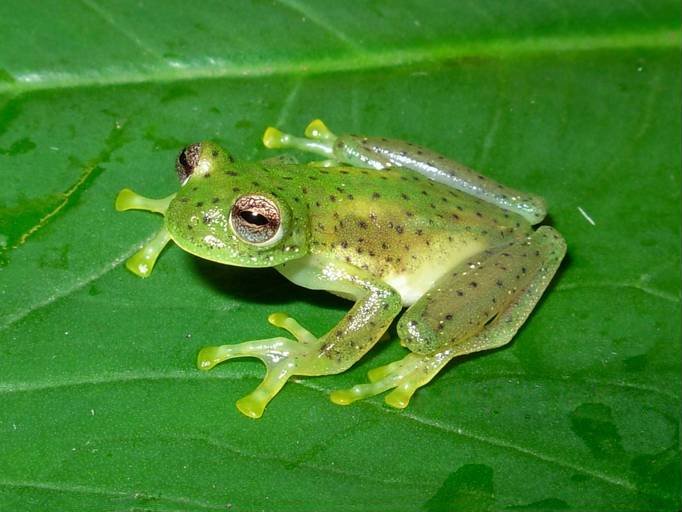Imagine a creature so unique that its very skin is like a window to its inner workings. Enter the world of glass frogs, those mesmerizing amphibians known for their transparent skin and remarkable ability to conceal their blood. Found primarily in the lush rainforests of Central and South America, glass frogs have fascinated scientists and nature enthusiasts alike. Their translucent underbellies offer a rare peek into their anatomy, sparking curiosity and wonder. These frogs are not only a marvel of nature’s design but also serve as a testament to the incredible adaptability of life on Earth.
The Unique Physique of Glass Frogs
Glass frogs are aptly named for their almost see-through skin, particularly on their undersides. This transparency allows observers to view their organs, including the heart, liver, and digestive system, almost like a living anatomy lesson. Their skin is often light green on the top, blending seamlessly with the leaves they inhabit. This dual coloration serves a dual purpose: it camouflages them from predators above and confuses those below. The transparency is not just a random trait; it’s a strategic adaptation that helps them survive in the wild. Imagine wearing a cloak that makes you nearly invisible to the world around you—that’s the daily life of a glass frog.
Masters of Disguise: The Art of Camouflage
Camouflage is an essential survival skill for many creatures, and glass frogs are no exception. Their translucent skin allows them to blend in with their leafy surroundings, making them hard to spot by predators. This natural camouflage is enhanced by their small size, usually ranging from 1 to 3 inches, which makes them even more elusive. When resting on a leaf, their green upper body matches the foliage, while the transparent belly minimizes shadows that could give away their position. This unique adaptation is a vivid example of evolution’s ingenuity, turning vulnerability into an asset.
Behavior and Habitat: Life in the Rainforest Canopy

Glass frogs predominantly inhabit the tropical rainforests of Central and South America, often found in the canopy layers. They prefer areas near streams, where the humidity is high and food is plentiful. These frogs are nocturnal, spending their nights foraging for insects and their days resting on leaves. The rainforest environment provides them with an abundance of cover and resources, ideal for their lifestyle. Their choice of habitat also plays a critical role in their reproductive cycle, as they lay eggs on leaves overhanging water, ensuring that the tadpoles can drop into their aquatic environment upon hatching.
The Astonishing Ability to Hide Their Blood

One of the most fascinating aspects of glass frogs is their ability to hide their blood, a trait that has intrigued scientists for years. This ability is primarily due to their unique circulatory system, which can redirect blood flow away from the skin, enhancing their transparency. This physiological adaptation is thought to be a defense mechanism, reducing the visibility to predators. By controlling their blood flow, glass frogs can become even less conspicuous, a true testament to their evolutionary prowess. This ability is not just a random quirk; it’s a finely tuned survival technique honed over millennia.
Reproduction: A Delicate Dance of Life
The reproductive habits of glass frogs are as fascinating as their appearance. During mating season, male glass frogs call out to attract females with distinctive vocalizations. Once a female is drawn in, the male fertilizes the eggs as she lays them on the underside of a leaf. This placement is strategic, protecting the eggs from predators and environmental threats. The male often stays behind to guard the eggs, ensuring their safety until they hatch. This behavior highlights the parental investment and care these frogs exhibit, which is crucial for the survival of their offspring in the wild.
Ecological Importance and Conservation
Glass frogs play a vital role in their ecosystem, acting as both predators and prey. They help control insect populations, contributing to the balance of their environment. However, like many amphibians, they face threats from habitat loss, pollution, and climate change. Conservation efforts are crucial to preserving these unique creatures and their habitats. Protecting the rainforests and maintaining biodiversity is essential for the survival of glass frogs and countless other species. Their presence is not just a wonder to behold but a reminder of the delicate balance of our natural world.
The Fascination with Transparent Skin
The transparent skin of glass frogs is not only a biological marvel but also a source of endless fascination for scientists. Studying these frogs provides insights into evolutionary biology, physiology, and environmental adaptation. The transparency allows researchers to observe internal processes without invasive methods, offering a unique opportunity to learn. This curiosity extends beyond science; it captures the imagination of anyone who appreciates the wonders of nature. Glass frogs serve as a living testament to the complexity and beauty of life, inspiring both scientific inquiry and admiration.
Adaptations Beyond Transparency
While their transparency is the most striking feature, glass frogs possess other adaptations that aid their survival. Their eyes, for instance, are positioned on top of their heads, allowing them to spot predators while remaining hidden. Their slender limbs and sticky toe pads enable them to navigate the foliage with ease, a crucial skill in their arboreal habitat. These adaptations, combined with their transparency, create a formidable survival package. Glass frogs are a reminder that evolution is a constant process, shaping life in response to the challenges and opportunities presented by the environment.
A Symbol of Nature’s Creativity
Glass frogs are more than just an oddity; they are a symbol of nature’s creativity and adaptability. Their existence challenges our understanding of what is possible in the natural world. They invite us to look closer, to appreciate the intricacies and marvels that abound in the animal kingdom. In a world where so much remains unseen, glass frogs offer a glimpse into the hidden wonders that lie beneath the surface. Their transparent beauty is a reminder that life is full of surprises, waiting to be discovered and celebrated.
Conclusion: The Enduring Mystery of Glass Frogs

The enigmatic glass frog continues to captivate and inspire all who encounter its translucent charm. As we delve deeper into their world, we uncover layers of complexity that challenge our perceptions and ignite our curiosity. In the grand tapestry of life, glass frogs hold a unique thread, weaving together the themes of adaptation, survival, and beauty. They remind us of the delicate balance of nature and the importance of preserving the wonders that inhabit our planet. As we reflect on the glass frog’s story, we are called to cherish and protect the fragile ecosystems that sustain such extraordinary creatures.




